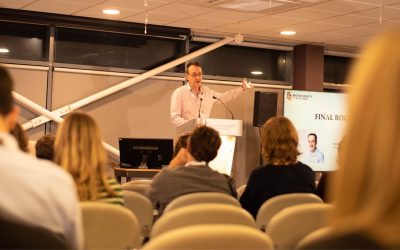What does COP26 mean to me?
The last few months have been a chilling reminder of the impact of climate change and a glimpse into our future. Researchers have concluded that the heatwave in North America would have been extremely unlikely without climate change, and it is likely that the floods in Europe will be attributed to the same cause. With global temperatures now estimated to be 1.1°C higher than preindustrial levels, we are feeling the effects.
This is exactly the reason why we need to collectively refocus our efforts on ensuring that we can limit warming to 1.5°C. The IPCC’s Sixth Assessment Report further shows the need for decarbonisation and that global warming of 1.5°C and 2°C will be exceeded during the 21st century unless deep Greenhouse Gas (GHG) emission reductions happen over the coming decades. All the emissions scenario’s they assessed estimated that warming would likely reach 1.5°C by 2040. COP26 could be our last chance to limit warming and take responsibility to reduce our emissions. The built environment is fundamental to this. It has a critical role to play in mitigating climate change and is also central to building resilience against climate extremes that are already upon us.
One step greener

COP26 is at a unique point in our history, with many saying that it is the last chance for governments to set targets that will limit the worst effects of climate change. Our leaders have gradually negotiated stronger action on climate change. Rightly or wrongly, they do this balancing the pressing need for decarbonisation against the impact the measures will have on their economies. In my role at Arcadis I quite often get asked what we can do as individuals when so much is decided in these global negotiations. It is my view that we strengthen the hand of our negotiators with the action that we take as individuals and as businesses. By demonstrating that we not only want this change but we will thrive and prosper through low carbon alternatives.
At Arcadis, we know we have an important role to play in accelerating towards a net zero world that improves quality of life for all. That’s why we are heavily involved in COP26. We are working with the UK Green Building Council to play our part in delivering the COP26 Built Environment Day, making sure the built environment industry’s voice is heard loud and clear at the conference. We are also running several client webinars to bring together different people, from both inside and outside our industry, in our collective race to net zero. And we are getting our people involved too, we’ve set up a COP ambassador group that will share ideas and help promote important messages around climate change.
My EV Journey

I have lived in London for all my adult life and have not needed a car. With two growing children we have however been using our car club more frequently, and last week I rented out our first electric vehicle (EV). Sitting in the quiet vehicle, with little vibration and no emissions, it is quite easy to see the impact the move to electric will have to our driving experience and the streets of London when not only cars, but all vehicles will be zero emissions. When you add the additional air quality benefits from switching out gas boilers, living in our cities will be a different experience all together.
But, I don’t have off-street parking and we are relying on the provision of EV charging points. It really brings home the work our EV team are doing across the country to support effective EV charging strategies and build this critical infrastructure. Not only that but our teams work with the network operators, developers and local authorities to identify the capacity needs and support the decision making on upgrades to the network to support the switch to EV’s.
Coming together for our planet

I also listened to colleagues last week talk about the work that we have been doing on Mobility as a Service in Scotland, it’s fascinating how we are helping people in the most remote places to access public transport. But it’s not just surface transport, we are also working on the UK’s first low carbon flight test centre in Scotland.
There is also increased focus on the carbon emitted through the construction and maintenance of our infrastructure. Highways England recently highlighted this in its recently published Net Zero Strategy, a focus that is echoed by many other infrastructure clients. We have been bringing in our experts from the Netherlands who have been through a number of these challenge to reduce these emissions and it has been great to learn from their experience. I also heard from colleagues in Australia on their project on circular economy in major development programs. It is this exchange of ideas that will help us to go further and faster.
The time to act is now
As we hope to strengthen the hand of those negotiating our future, being able to amplify the steps that we take in one region to another is an exciting prospect in this decade of change. We must therefore challenge our leaders to go further and take every opportunity to tackle climate change. The action we take can have a profound impact. The time to act is now.
The views expressed in this blog do not necessarily reflect the views of the British Society of Soil Science.





